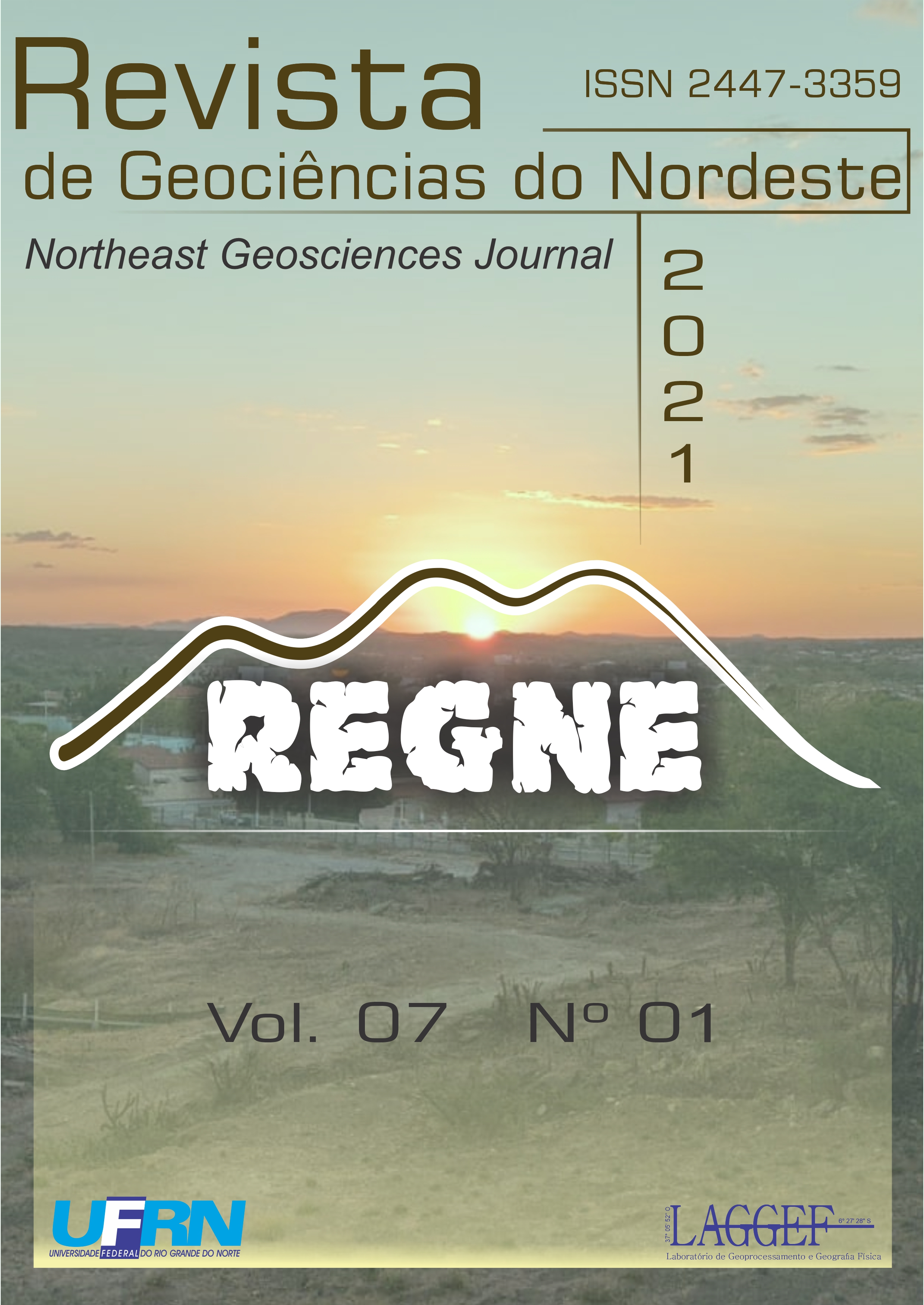ECONOMIC POTENTIAL OF THE GOIANA CITY-PE: SANDY DEPOSITS EXAMPLE FOR CIVIL CONSTRUCTION
DOI:
https://doi.org/10.21680/2447-3359.2021v7n1ID20759Abstract
The Goiana City is located at the northern end of the Pernambuco coast, directly bordering the state of Paraíba. It is located to the north of the Pernambuco principal city (Recife) and inserted in the geological context of the Paraíba Basin where sedimentary coverings predominate from the Upper Cretaceous to the recent age. The Barreiras Formation covers a considerable portion of the city. This unit is related to the existence of alluvial fans and fluvial systems that possibly were graded to deltaic systems and, they present a facies variation from clay to conglomerates. The action of weathering and associated leaching on the sandy-clay layers of this unit led to the occurrence of sandy deposits with a high content of SiO2 (> 95%) known as "white sands". The thickness of these deposits varies between 0.1 and 3 meters and the grains are well selected and subangular. The predominant particle size fraction is fine to medium according to the standards of the Brazilian Association of Technical Standards (ABNT). Considering all the characteristics of the ore, the deposits quality and composition, the "white sands" are considered to be of good quality for the construction industry, which is why studies and explorations have been intensifying in the region.


 Português (Brasil)
Português (Brasil) English
English







